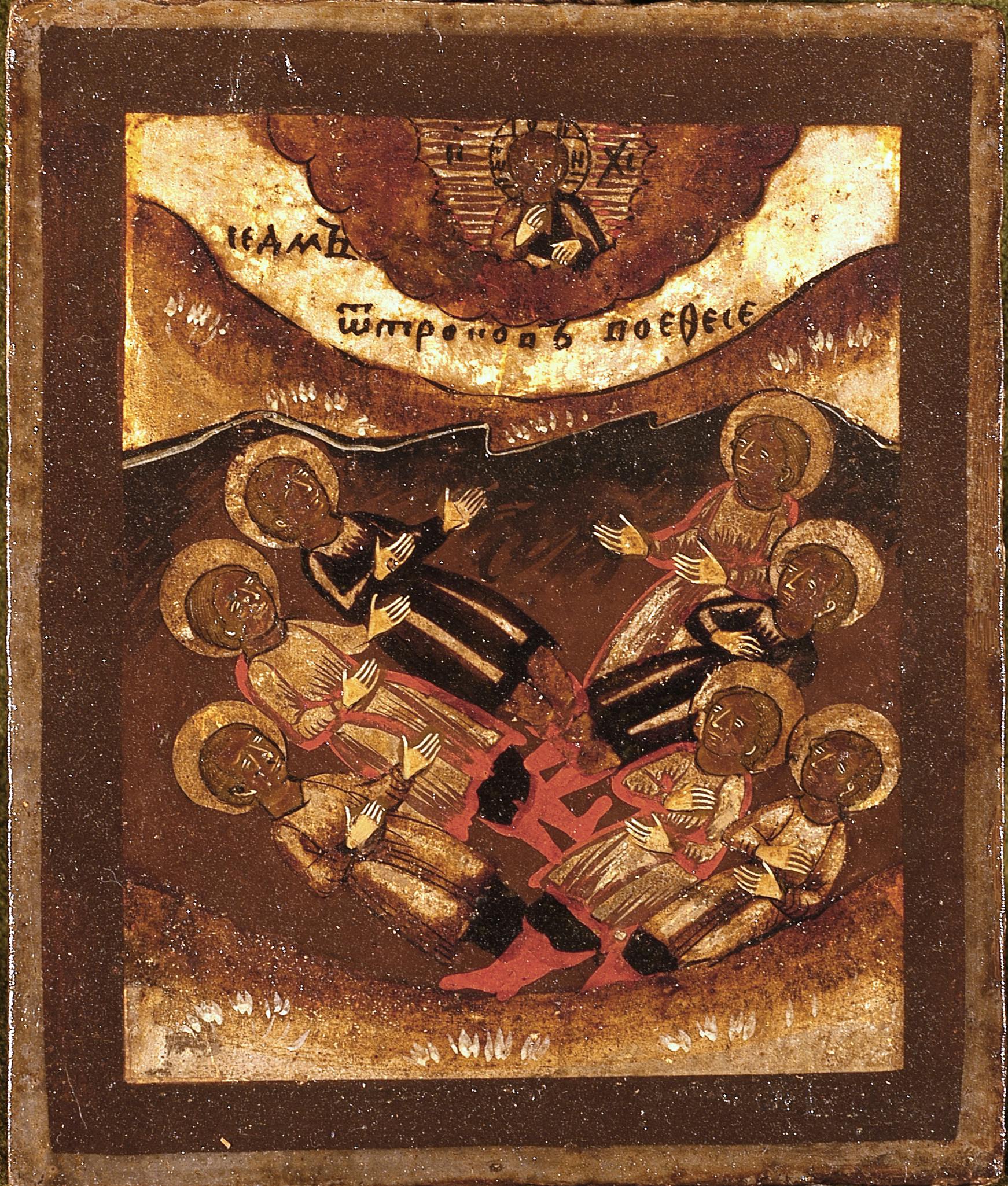The Seven Sleepers of Ephesus (inv. 1890 n. 9326)
Central Russia
Seven young saints lie upon the ground within a deep cavern. Their eyes are closed and their hands are turned towards Christ the Saviour, depicted above on a curtain of clouds. These are the seven sleepers of Ephesus, the seven youths who, according to a legend going back to the 5th century and narrated in the later Legenda Aurea by Jacopo da Varazze (late 13th century), were called before the court by the emperor Decius (249-251) to renounce their Christian faith. Although they refused to offer sacrifices to pagan idols, they were released by the emperor in the hope that they would repent and repudiate Christianity. However, convinced of their faith, the youths hid in a cave on Mount Coelian, gathered in prayer, to avoid being arrested once more. Having learned of this, Emperor Decius ordered the entrance to the cave to be closed up, thus condemning them to death. Through divine intervention, however, they sank into a long sleep and awoke two centuries later, when the stones obstructing the entrance to the cave were removed by masons. The reign of Emperor Theodosius the Younger (408-450) fell and the persecution of Christians came to an end. This miracle was interpreted as proof of the truth of the resurrection of the flesh as announced by Christ.
The compositional layout of this icon is highly simplified as it does not include the procession of people at the moment of the sleepers’ awakening, as in the most widespread version of this icon. The compositional simplicity and not overly refined pictorial drafting are characteristics attributable to a provincial workshop in central Russia in the first half of the 18th century.
